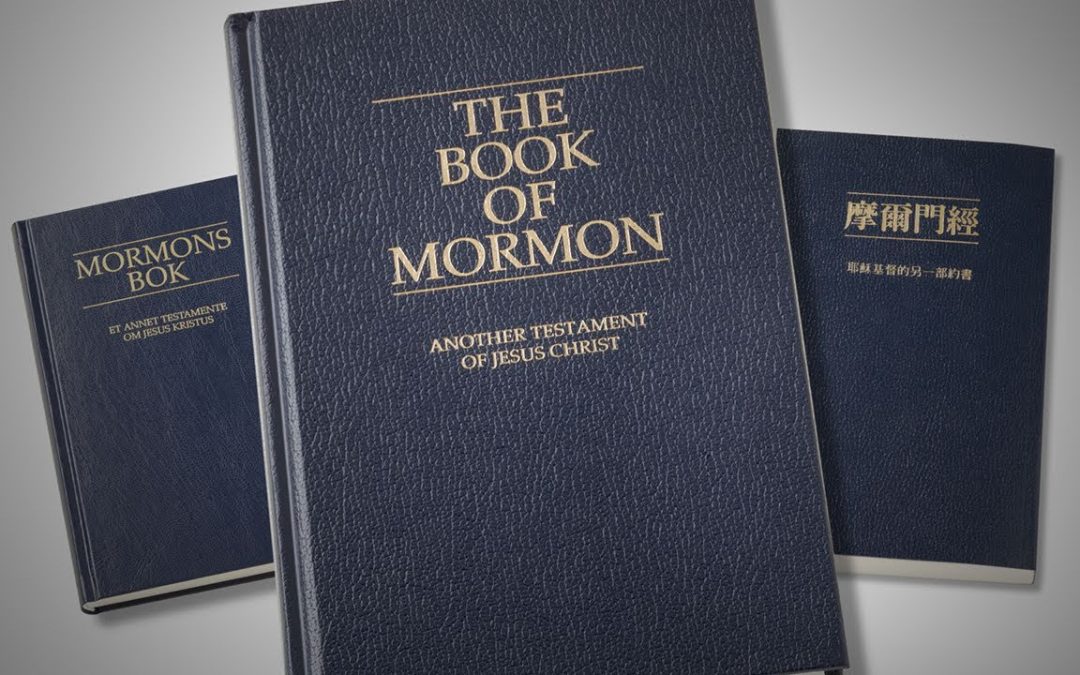Dear Gramps,
Can you comment on the differentiation of the text of each book written in the Book of Mormon? Since each book was pretty much written by a different person, their writing styles should be somewhat different than the other writers. Can you also comment on the common phrase: “And it came to pass…”? That phrase seems to have been a common introduction among ancient prophets.
Tyler, from Gilbert, Arizona
Dear Tyler,
I’m sorry that I am not able to comment on the different grammatical styles of each of the Book of Mormon authors, although I am sure that there are those linguists that can do just that. Authors signatures are related to the frequency and placement of non-informational words in the text, such as articles, conjunctions and other connecting words.
With respect to the phrase, “and it came to pass,” it is used in the Book of Mormon on the average of once in every four verses, for a total of 1123 times. “It came to pass,” both with and without the conjunction “and,” is used 1153 times. In the book of Genesis, by comparison, “and it came to pass” is used only 63 times, and in the book of Exodus it is used only 22 times. “And it shall come to pass” is used in Genesis 66 times, and in Exodus 29 times. But the Book of Mormon was written in Egyptian, not Hebrew. Dr. Hugh Nibley avers that the phrase “and it came to pass” is really an Egyptian expression and is used frequently in the Egyptian language.
One particular language differentiator between Book of Mormon authors is the use of the corrective “or.” When either the first person writer or the abridger made a ‘stylographical’ error in inscribing on the gold plates in Egyptian hieroglyphs he corrected himself by using the term, “or” and repeating the phrase in a corrected form. Perhaps the most blatantly obvious example of this form of correction is found in Alma 24:19—
And thus we see that, when these Lamanites were brought to believe and to know the truth, they were firm, and would suffer even unto death rather than commit sin; and thus we see that they buried their weapons of peace, or they buried the weapons of war, for peace.
The abridger, Mormon, probably thinking ahead, wrote weapons of peace when he intended to write weapons of war, and chose this practical means to make the correction. This form of correction is used in the Book of Mormon 72 times, and the phrase, or rather, is used 11 times. Amplified phrase corrections are used six times. An example of an amplified phrase correction is—
For the things which some men esteem to be of great worth, both to the body and soul, others set at naught and trample under their feet. Yea, even the very God of Israel do men trample under their feet; I say trample under their feet but I would speak in other words—they set him at naught, and hearken not to the voice of his counsels (1 Ne.19:7) .
The frequency of the use of the corrective ‘or’ can be quite revealing when comparing its use by different authors and in different segments of the Book of Mormon. First, the frequency of use in different segments of the Book of Mormon—
Comparing the Small Plates to the Large Plates– The Small Plates contain the actual writings of various authors, while the Large Plates are an abridgement by Mormon. One would expect a higher error frequency in an abridgement than in a first person account, and that is exactly what we observe. The Small Plates contain 1598 verses and we find one ‘or’ correction in every 319 verses. While the Large Plates, with a total of 4476 verses, has one correction for every 59 verses–a correction frequency in the Large Plates 5.4 times greater than in the Small Plates, consistent with expectations. Comparing the error frequency of the first person writers, Nephi, Jacob, Mormon and Moroni (Jarom wrote only 14 verses, so we will not consider him.), we find the following. Nephi, who wrote 918 verses, made only three ‘or’ corrections, for a correction rate of 306 verses per correction, and Jacob, who wrote 266 verses, had no ‘or’ corrections. Moroni wrote a total of 216 first person verses with no ‘or’ corrections, while Mormon, who wrote 412 first person verses, had 5 such corrections, for a rate of 82 verses per correction. This is quite consistent with expectations as Mormon wrote essentially with a sword in one hand and a stylus in the other. He was at the battle front for most of his life, while Moroni undoubtedly wrote most of his material in solitude, with time on his hands. We would expect, as we observe, a higher degree of accuracy from him than from any of the other writers. Now, comparing the abridgement verses written by Mormon and Moroni, we find Mormon, who abridged 3902 verses, had a corrected error rate of 55 verses per correction, while Moroni, who wrote 354 abridgement verses, had only one ‘or’ correction, for a correction rate of 354 verses per correction. Thus Mormon’s error correction rate was 6.4 times that of Moroni–again perfectly consistent with expectations.
Gramps







